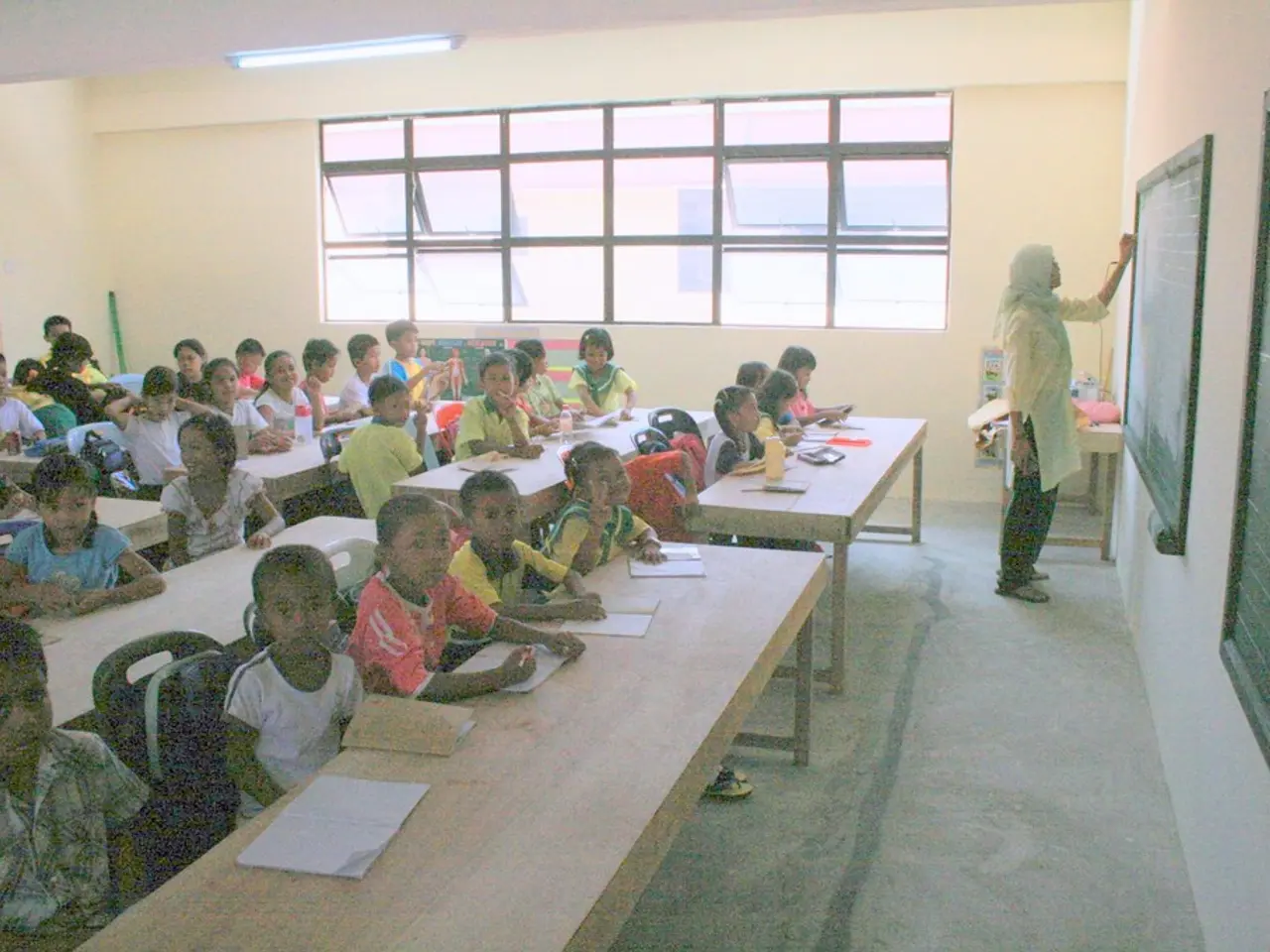Strategies for Crafting Examinations Resilient to Artificial Intelligence
In the era of rapidly advancing technology, educators are increasingly focusing on creating AI-resistant assessments to promote critical thinking, creativity, and deep engagement among students. Here are some key strategies being employed:
Making thinking visible is a crucial approach, achieved through synchronous formative assessments that require immediate, individual responses during class. This could involve using mini-whiteboards or digital platforms like Pear Deck or Nearpod to capture real-time understanding and reasoning.
Flipping project workflows is another effective strategy. By having students do initial research independently but performing synthesis, analysis, and creation during supervised sessions, educators can ensure that higher-order thinking occurs under observation.
Prioritizing the process over the product is also important. Assignments that require drafting, revising, reflecting, and explaining reasoning, such as portfolios, project journals, and “thinking aloud” videos, help prevent students from outsourcing their thinking entirely to AI.
Encouraging critical dialogue and metacognition is another valuable method. This can be achieved by having students compare multiple AI-generated responses, justify their choices in using AI, or reflect on their problem-solving approaches.
Oral assessments like live or recorded presentations and interviews also play a significant role in reducing AI reliance. These strategies demand real-time articulation of ideas, showcasing students' spontaneous thinking and problem-solving skills.
Project-based learning and collaborative tasks are another effective way to foster creativity, real-world problem solving, and authentic teamwork. These tasks are much harder for AI to replicate meaningfully.
Designing assessments with follow-up questions that probe students’ reasoning, evidence selection, and ability to apply concepts to new situations can uncover whether genuine critical thinking has occurred versus AI-generated answers.
Implementing visual representations, such as self-recorded videos, in assessments can enhance storytelling and engagement. This approach can be a valuable tool in encouraging students to engage with content on deeper levels.
Breaking assignments into multiple stages can help reduce the risk of AI-generated responses. This approach allows for assessing students at various points throughout the process, encouraging deeper engagement and understanding.
Real-time assessments, such as live presentations, debates, or interactive in-class activities, are AI-resistant. These strategies require students to actively engage with the material in real-time, showcasing their spontaneous thinking and problem-solving skills.
To make assignments more AI-resistant, instructors can ask students for multi-modal deliverables and design tasks that demand students to gather specific information not readily available to most AI tools. For instance, in a history assignment, instructors can ask students to investigate the impact of World War II on their local community or a specific group of people in their region.
By combining these approaches, assessments can better capture and encourage genuine cognitive engagement, creativity, and critical thinking that AI tools alone cannot replicate. These methods also foster deeper learning and prepare students for complex intellectual tasks beyond surface-level AI outputs.
- To promote critical thinking, educators are employing strategies like making thinking visible during class, through tools like Pear Deck or Nearpod, which require immediate, individual responses.
- Flipping project workflows is another method, where students do initial research independently and perform higher-order thinking during supervised sessions, ensuring real-world problem-solving.
- Instructors are also prioritizing the process over the product, assigning tasks such as portfolios or project journals that require drafting, revising, reflecting, and explaining reasoning to prevent outsourcing of thinking to AI.
- Encouraging metacognition through dialogue, such as comparing AI-generated responses or reflecting on problem-solving approaches, is another valuable method to foster critical thinking and self-awareness among students.




